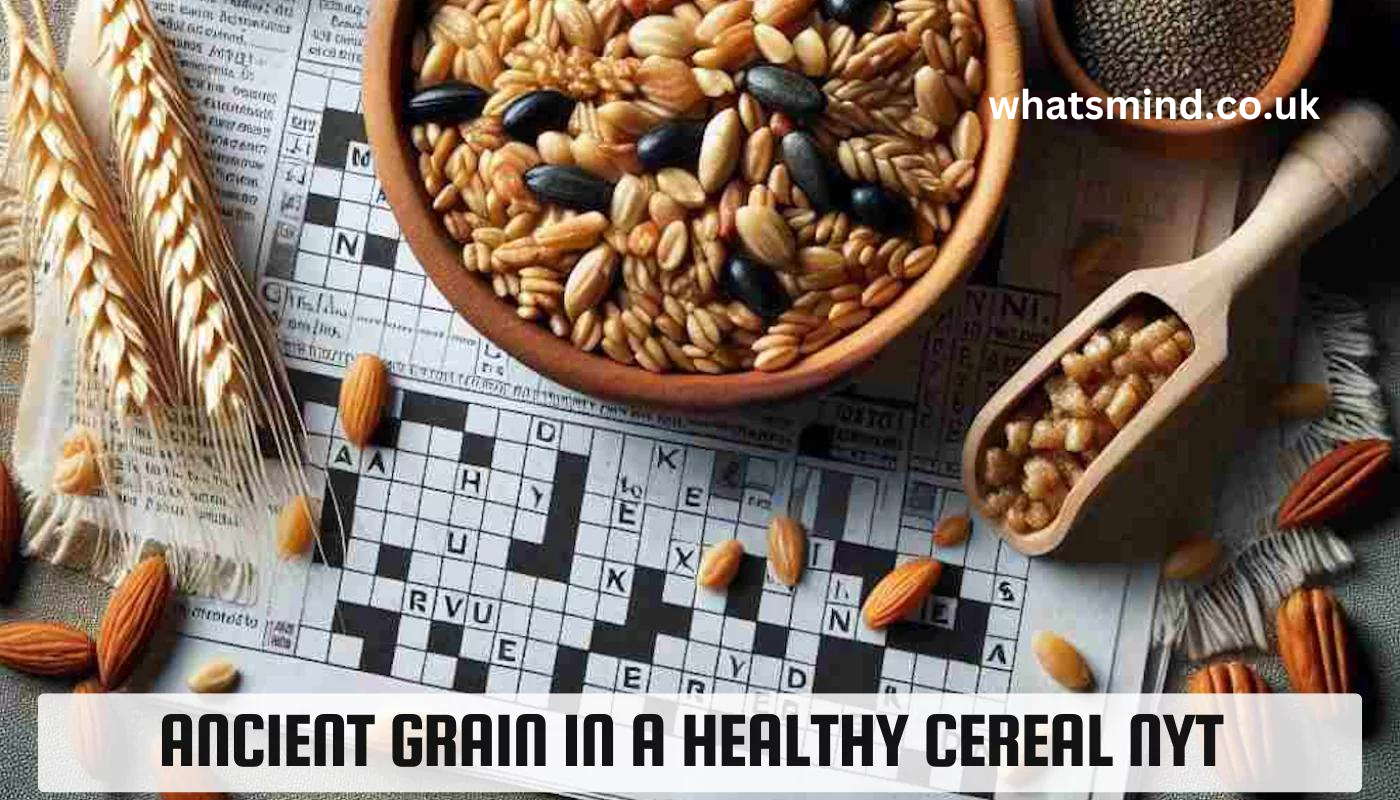Introduction
In recent years, there has been a significant rise in the popularity of healthy cereals, with many people looking to make more nutritious choices for their breakfast routines. One of the key trends within this movement is the inclusion of ancient grains. But what exactly are ancient grains, and why are they becoming a staple in healthy cereals?
What are Ancient Grains?
Definition and Examples
Ancient grains are a group of grains and pseudocereals that have remained largely unchanged over the last several hundred years. Unlike modern grains, which have been selectively bred to maximize yield and ease of processing, ancient grains retain their original genetic makeup. Examples include quinoa, amaranth, farro, spelt, and millet.
Nutritional Benefits
These grains are packed with nutrients and offer a range of health benefits. They are typically higher in protein, fiber, vitamins, and minerals compared to their modern counterparts.
Top Ancient Grains for Healthy Cereals
Quinoa
Quinoa is a complete protein, meaning it contains all nine essential amino acids. It is also high in fiber, magnesium, and iron, making it a nutritional powerhouse.
Amaranth
Amaranth is another high-protein grain, rich in lysine, an amino acid lacking in many other grains. It is also a good source of calcium, iron, and magnesium.
Farro
Farro is an ancient variety of wheat that is high in fiber, protein, and antioxidants. It has a nutty flavor and chewy texture, making it a great addition to cereals.
Spelt
Spelt is a type of wheat that is easier to digest than modern wheat. It is rich in fiber, protein, and essential nutrients like manganese and phosphorus.
Millet
Millet is a versatile grain that is high in magnesium, phosphorus, and antioxidants. It is also gluten-free, making it suitable for those with gluten sensitivities.
The Nutritional Profile of Ancient Grains
High Fiber Content
Fiber is essential for digestive health, and ancient grains are a fantastic source of both soluble and insoluble fiber. This helps in maintaining bowel health and regulating blood sugar levels.
Rich in Protein
Many ancient grains, like quinoa and amaranth, are high in protein. This is particularly beneficial for those following a plant-based diet, as these grains provide a valuable source of protein.
Essential Vitamins and Minerals
Ancient grains are rich in essential vitamins and minerals, including B vitamins, iron, magnesium, and zinc. These nutrients are crucial for maintaining overall health and well-being.
Health Benefits of Including Ancient Grains in Your Diet
Improved Digestion
The high fiber content in ancient grains aids in digestion and helps prevent constipation. It also supports a healthy gut microbiome, which is vital for overall health.
Better Heart Health
Ancient grains are rich in antioxidants and anti-inflammatory compounds, which can help reduce the risk of heart disease. The fiber in these grains also helps lower cholesterol levels.
Enhanced Energy Levels
The complex carbohydrates found in ancient grains provide a steady source of energy, helping you stay energized throughout the day. These grains also have a low glycemic index, preventing blood sugar spikes.
Weight Management
Incorporating ancient grains into your diet can help with weight management. Their high fiber content keeps you feeling full longer, reducing overall calorie intake.
How to Incorporate Ancient Grains into Your Breakfast
Homemade Cereal Recipes
Making your own cereal with ancient grains is a great way to ensure you’re getting a nutritious start to your day. Combine cooked quinoa, amaranth, and your favorite nuts and fruits for a delicious homemade cereal.
Store-Bought Options
There are many store-bought cereals that feature ancient grains. Look for options that are low in added sugars and high in whole grains to maximize the health benefits.
Mixing Ancient Grains with Modern Cereals
If you enjoy your current cereal but want to boost its nutritional profile, consider mixing in some ancient grains. Adding a spoonful of cooked quinoa or a sprinkle of millet can enhance both the texture and the nutritional content of your breakfast.
Ancient Grains vs. Modern Grains
Nutritional Comparison
Ancient grains generally offer a more robust nutritional profile compared to modern grains. They are higher in protein, fiber, and essential nutrients, making them a healthier choice.
Environmental Impact
Growing ancient grains can be more environmentally sustainable. They often require fewer inputs, such as water and pesticides, and can be grown in diverse climates, promoting agricultural biodiversity.
Taste and Texture Differences
Ancient grains offer unique flavors and textures that can enhance your meals. Their nutty, earthy flavors and varied textures add depth to dishes, making them more interesting and enjoyable.
Popular Brands Offering Ancient Grain Cereals
Brand 1
Brand 1 offers a range of cereals that incorporate ancient grains like quinoa and spelt. Their products are known for their high quality and great taste.
Brand 2
Brand 2 focuses on organic and non-GMO ancient grain cereals. They offer a variety of flavors and combinations to suit different taste preferences.
Brand 3
Brand 3 combines ancient grains with modern superfoods to create nutrient-dense cereals. Their innovative approach makes them a popular choice among health-conscious consumers.
DIY Ancient Grain Cereal Recipes
Recipe 1: Quinoa and Amaranth Mix
Combine cooked quinoa and amaranth with dried fruits, nuts, and a touch of honey for a delicious and nutritious cereal.
Recipe 2: Farro and Millet Blend
Cook farro and millet together, then mix with fresh berries, a sprinkle of cinnamon, and a splash of almond milk for a hearty breakfast.
Recipe 3: Spelt and Chia Seeds Fusion
Mix cooked spelt with chia seeds, coconut flakes, and a drizzle of maple syrup for a flavorful and fiber-rich cereal.
Tips for Choosing the Best Ancient Grain Cereal
Reading Nutrition Labels
Always check the nutrition labels to ensure the cereal is high in whole grains and low in added sugars. Look for cereals with at least 3 grams of fiber and less than 10 grams of sugar per serving.
Avoiding Added Sugars
Many cereals, even those marketed as healthy, can contain high amounts of added sugars. Opt for cereals with natural sweeteners like honey or maple syrup instead.
Considering Organic Options
Choosing organic cereals can reduce your exposure to pesticides and other chemicals. Look for certifications like USDA Organic to ensure you’re getting a quality product.
Ancient Grains for Special Diets
Gluten-Free Options
Many ancient grains, such as quinoa, amaranth, and millet, are naturally gluten-free. They are a great choice for those with celiac disease or gluten sensitivities.
Vegan and Vegetarian-Friendly Choices
Ancient grains are an excellent source of plant-based protein, making them ideal for vegan and vegetarian diets. They provide essential amino acids and nutrients that are sometimes lacking in plant-based diets.
Paleo and Keto-Friendly Ancient Grains
While most grains are not suitable for paleo or keto diets, some ancient grains like chia seeds and flaxseeds can be incorporated in moderation. These seeds offer healthy fats and fiber without the high carbohydrate content.
The Future of Ancient Grains in Breakfast Foods
Trends and Innovations
As consumer demand for healthier options grows, we can expect to see more innovative products featuring ancient grains. From granola bars to smoothies, ancient grains are becoming more versatile and accessible.
Consumer Demand
The rising awareness of the health benefits of ancient grains is driving their popularity. Consumers are seeking out nutrient-dense, whole food options, making ancient grains a staple in many households.
Sustainability Factors
The environmental benefits of growing ancient grains are also contributing to their popularity. Sustainable farming practices and reduced resource requirements make ancient grains an eco-friendly choice.
Common Misconceptions About Ancient Grains
Taste Myths
Some people believe ancient grains have a bland or unpleasant taste. However, with their nutty, earthy flavors, ancient grains can enhance the taste of many dishes.
Availability Concerns
While ancient grains may have been hard to find in the past, they are now widely available in most grocery stores and online retailers.
Nutritional Misunderstandings
There is a misconception that ancient grains are nutritionally inferior to modern grains. In reality, ancient grains often have a superior nutritional profile, offering more fiber, protein, and essential nutrients.
The Environmental Impact of Growing Ancient Grains
Sustainable Farming Practices
Ancient grains can be grown using sustainable farming practices, which help preserve soil health and reduce the need for chemical inputs. This makes them a more environmentally friendly option.
Biodiversity Benefits
Growing a variety of ancient grains promotes agricultural biodiversity. This diversity can improve the resilience of crops to pests and diseases, leading to more stable food systems.
Reducing Carbon Footprint
Ancient grains often require less water and fertilizer than modern grains, helping to reduce the carbon footprint of their production. This makes them a more sustainable choice for environmentally conscious consumers.
Conclusion
Incorporating ancient grains into your diet, especially through healthy cereals, can provide numerous health benefits. From improved digestion to better heart health, these nutrient-dense grains are a valuable addition to any breakfast routine. As consumer demand continues to rise, the availability and variety of ancient grain cereals will only increase, making it easier than ever to enjoy these wholesome grains.
FAQs
What makes ancient grains different from modern grains? Ancient grains have remained largely unchanged for centuries, while modern grains have been selectively bred for higher yields and ease of processing. This makes ancient grains more nutrient-dense and often more sustainable.
Are ancient grain cereals gluten-free? Some ancient grains like quinoa, amaranth, and millet are naturally gluten-free. However, grains like farro and spelt contain gluten. Always check labels if you have gluten sensitivities.
How do I store ancient grains? Ancient grains should be stored in a cool, dry place in an airtight container to maintain freshness. They can also be refrigerated or frozen for longer shelf life.
Can I use ancient grains in other meals besides breakfast? Absolutely! Ancient grains are versatile and can be used in salads, soups, stews, and even baked goods. They add a nutritious boost to any meal.
What are the most popular ancient grains? Some of the most popular ancient grains include quinoa, amaranth, farro, spelt, and millet. These grains are celebrated for their nutritional benefits and unique flavors.



